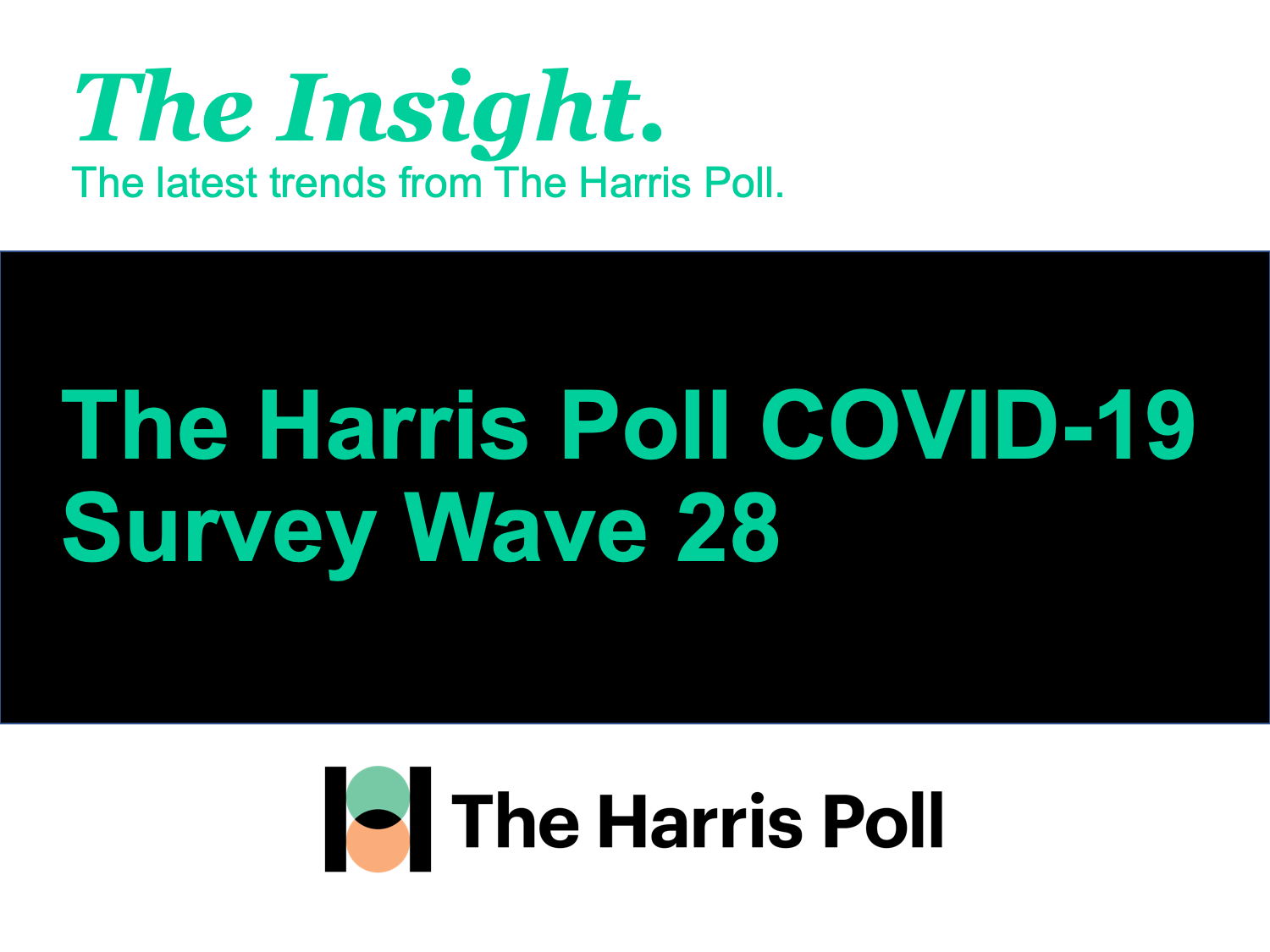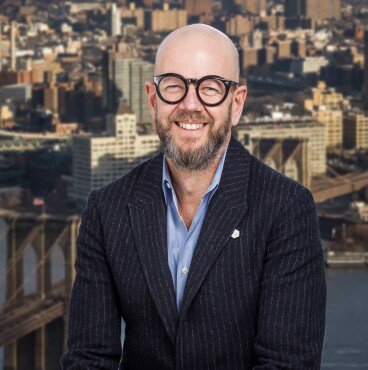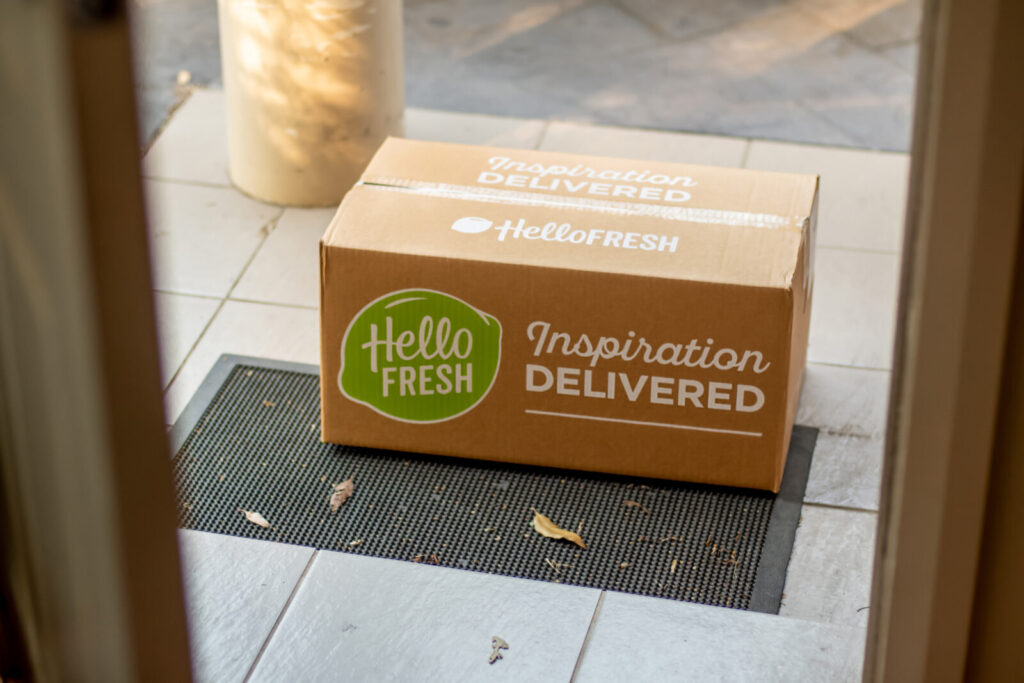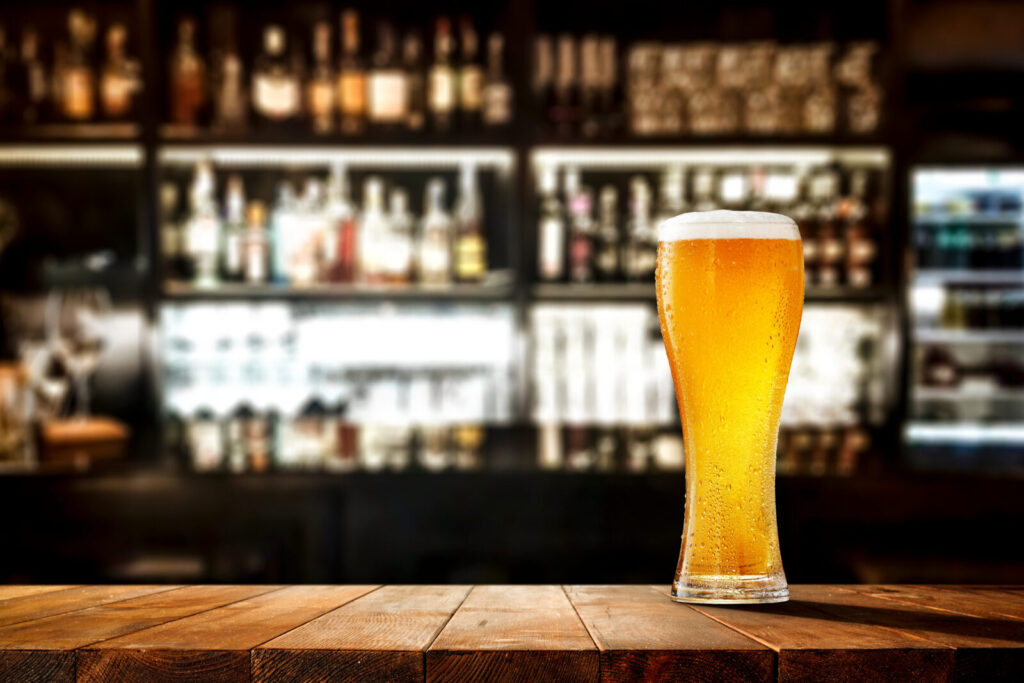Brief • 4 min Read

Weekly reflections on Cv19’s social dislocation from The Harris Poll.
In The Harris Poll COVID-19 Tracker (Week 28) fielded September 3 – 5, 2020, we dive deeper into the logistical challenge of distributing the long-awaited vaccine, weigh the pros and cons of remote work, examine the impact of COVID-induced stress, and look at the future of office real estate.
As a public service, our team has curated key insights to help leaders navigate COVID-19. Full survey results, tables, and weekly summaries can be accessed for free at The Harris Poll COVID-19 Portal. We will continue to actively field on a regular cadence to track the shifts in sentiment and behaviors as the news and guidelines evolve.
Who’s Best to Distribute a COVID-19 Vaccine?
As news of a COVID-19 vaccine feels seemingly within reach, the world will soon turn to the daunting next phase: the logistics of distribution.
- When it comes to who is best prepared to distribute the vaccine once it is ready, Americans are divided in who they trust: (34%) say the states, (30%) say the federal government, and just (13%) say private companies.
- As with most things in America, there is a partisan divide on how prepared the country is to deliver a COVID-19 vaccine. While the country as a whole is split, (47%) say the country is prepared and (53%) say it is not prepared), nearly two-thirds (64%) of Republicans say we are prepared vs only (35%) of Democrats.
- How critical is a COVID-19 vaccine to returning to normal? Nearly half (47%) of Americans say it will make them comfortable to do certain activities again, such as fly on a plane, go to the gym, or go to large events.
- The CDC has told states to prepare to distribute a vaccine as early as November, while nine biopharmaceutical companies signed a pledge vowing any vaccine submitted for approval will be safe and effective in order to provide confidence to consumers.
- However, some worry the vaccine may not be the definitive solution to the pandemic as many are hoping. Why? Because, as the Economist warns, conspiracy theories around vaccinations may prevent it from creating herd immunity. In our polling from August 16, nearly one-third (31%) of Americans say they won’t get the vaccine as soon as it becomes available.
Takeaway: The creation of a COVID-19 vaccine will likely not bring an immediate end to the pandemic without a well-executed distribution plan and public confidence in receiving the vaccine. From approval to creating vials to distribution to administering the shot, vaccinating the global population will be an unprecedented logistical challenge.
Some Americans Went to Movies This Weekend. Many Did Not. Here’s Why.
Any other year would have seen Americans flocking to the movie theater to see the summer blockbusters, but in 2020 the pandemic has put a hold on most big releases until consumers are comfortable returning to the theater.
- Over the holiday weekend, Christopher Nolan’s new thriller ‘Tenet’ debuted in theaters after significant delays due to the pandemic and was a major test for theaters nationwide. As CNBC frames it, “‘Tenet’ in pre-covid times would have been expected to tally between $35 million and $55 million during its opening weekend, on par with other Nolan films like ‘Interstellar’ and ‘Inception.’ The $20 million is reflective of a 50% cap on attendance at theaters and that only around 65% of cinemas have reopened to the public.”
- Being indoors and in close proximity to other viewers is a no go for most Americans during the pandemic: (70%) of Americans say movie theaters are more dangerous than other types of public gatherings right now, and an equal number (71%) say they would not feel safe in a movie theater right now.
- To get attendees into the seats, movie theaters will need to adopt the ‘select all that apply’ approach of most businesses: two thirds of Americans (66%) say social distancing and a limit to the number of people allowed in are among the most important things a movie theater could do during COVID-19, followed by (63%) saying thoroughly cleaning theaters, (61%) want to see mandatory masks throughout the theater, and (58%) say hand sanitizer stations throughout.
- Is the theater half-empty or half-full? Nearly half (47%) of Americans say 25% capacity is an appropriate level to operate at, while (41%) say 50% capacity is appropriate. Only 1 in 10 (12%) say a 75% capacity is appropriate.
Takeaway: There are certain types of activities – sporting events, concerts, going to the movies – which rely on a crowd as part of the experience and will be among the last to return to what we once considered to be normal. Until then, the movie industry will be looking at half-full theaters, drive-ins, and direct-to-streaming options. What movie theaters will look like post-COVID remains unclear: nearly three-fifths (58%) of Americans are worried they might not survive.
Is Work-From-Home Working?
Work-from-home is here to stay, at least until after the pandemic ends. What will the future of remote work look like?
- Most Americans (70%) are currently working or have the ability to work from home during the pandemic. Remote life skews younger: three-fourths (74%) of Gen Z/Millennials and (75%) of Gen X are able to work from home, while just under three-fifths (58%) of Boomers are able to.
- Americans strongly support working-from-home during the pandemic: a majority (86%) say employees should be allowed to work-from-home during the pandemic until they feel comfortable to return (86%). And it’s here to stay for the foreseeable futures: three-fifths (60%) say it is likely they will continue to work remotely this fall and (84%) agree if the work is able to be done remotely, employers should not require their employees to return to the office until COVID-19 is no longer a threat.
- Some Americans have adjusted to remote life: one-quarter (25%) say their productivity has increased, while just under one-fifth (18%) say their productivity has decreased.
- Despite the strong support and necessity of work-from-home during the pandemic, Americans see plenty of drawbacks: (68%) say it’s difficult to train a new hire for a job remotely, (66%) agree they cannot get to meaningfully know new coworkers when interacting only online, and (62%) say they feel less connected to their team since work-from-home was put in place.
- While many Americans have become fans of remote working, there is at least one prominent critic: Netflix CEO Reed Hastings tells the Wall Street Journal he doesn’t “see any positives. Not being able to get together in person, particularly internationally, is a pure negative. I’ve been super impressed at people’s sacrifices.”
Takeaway: Despite the convenience and security of working-from-home, it will never perfectly replace the benefits of face-to-face interaction among colleagues. After the relative success of the forced work-from-home experiment, businesses will need to adapt to workers’ demands.
Summer’s Gone, But Stress is Not
With Labor Day Weekend behind us, summer and the slight mental escape it offers is officially behind us. And with it, Americans see increasing stress as we head into the fall phase of the pandemic.
- With a presidential election and a historic pandemic coinciding, the future of the country (43%) is causing more stress among Americans than going back to school (34%), personal finances (29%), the upcoming holidays (28%), physical health (25%), and work (24%).
- Our stress is causing stress for…our dentist? As the New York Times reports, “from COVID-induced nightmares to ‘doomsurfing’ to ‘coronaphobia,’ it’s no secret that pandemic-related anxiety is affecting our collective mental health. That stress, in turn, leads to clenching and grinding, which can damage the teeth.”
- As Americans continue to stay home as much as possible, how are they passing the time to ease the stress and anxiety? More than three-fifths (63%) are watching more TV; (49%) are listening to more music; (42%) are spending more time with family; (35%) have been working out, and (35%) are playing video games.
- But despite the increased stress resulting from the pandemic, American households are experiencing some silver linings: (71%) of married individuals say the pandemic has had a positive impact on their marriage; only (29%) say it has been negative. And three-fifths (60%) of those with kids doing virtual schooling say the alternative method had had a positive impact on their household.
Takeaway: Pandemic-induced stress is changing everything from our consumer habits to our health and relationships.
The Death of the Office?
With support work-from-home here to stay until the pandemic is over and workers feel comfortable to return, will the office ever be the same?
- In a survey The Harris Poll conducted for Crain’s Chicago Business, we found less than one-third (31%) of business people in Chicago say there will be no change in the amount of office space they will lease after the COVID-19 pandemic. Nearly half (47%) plan to reduce their office space in some capacity, though only (4%) say they are not planning on keeping any.
- Office space isn’t the only area business people in Chicago are pessimistic about: (57%) say business conditions in the Chicago metro area have deteriorated over the last month. However, feelings are mixed about where the Chicago economy will be in six months: (41%) say the economy will be in good condition, while (23%) say fair and (37%) say it will be in bad condition.
- But it’s not just COVID-related effects holding businesses back: (26%) of business people in Chicago say taxes are the biggest issue holding businesses back in Chicago, while (20%) say the economy, (19%) say crime, (11%) say employment issues, and (10%) say the bureaucracy.
- And it’s not just Chicago: The New York Times dives into what will happen to all that Manhattan office space, writing “as they grow accustomed to working from home, many businesses are delaying signing new leases until rents drop and the pandemic passes.”
Takeaway: From the lunchtime spots to the retail shops in business districts across the nation, workers piling into office space is an economy unto its own. One of the biggest unanswered questions of the pandemic is when workers will start to return en masse and the lingering effect this will have on local economies.
Subscribe for more Insights
Subscribe to our newsletter for the latest trends in business, politics, culture, and more.
Download the Data
This survey was conducted online within the U.S. by The Harris Poll from September 3-5 among a nationally representative sample of 2,022 US. adults.
Download
Subscribe for more Insights
Subscribe to our newsletter for the latest trends in business, politics, culture, and more.
Download the Data
This survey was conducted online within the U.S. by The Harris Poll from September 3-5 among a nationally representative sample of 2,022 US. adults.
DownloadRelated Content








